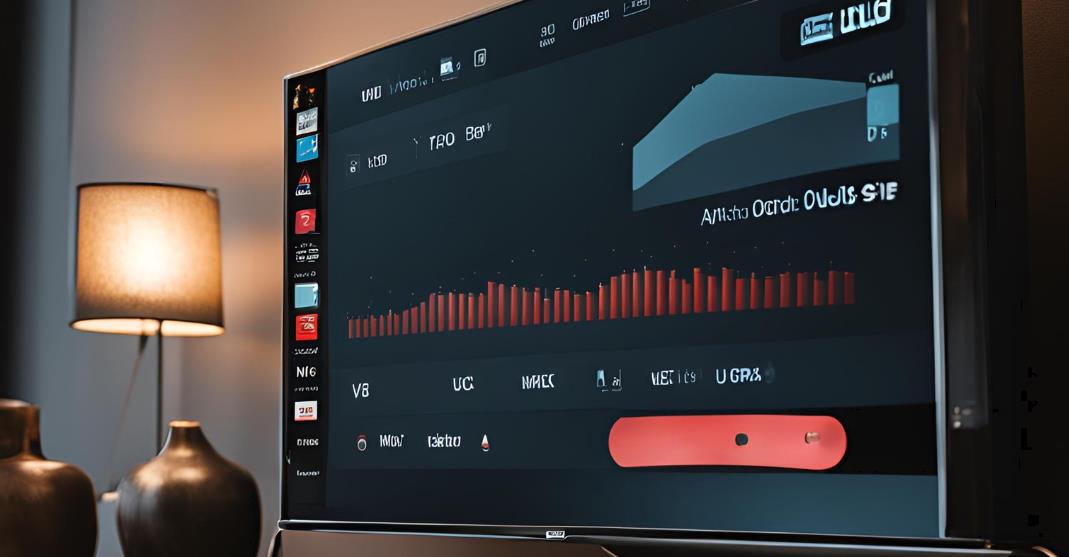In the realm of children’s entertainment and educational activities, dot-to-dot puzzles have always held a special place. These engaging puzzles not only provide a fun way to pass the time but also help in developing fine motor skills, hand-eye coordination, and cognitive abilities. Recently, the world of dot-to-dot puzzles has been invigorated by a fresh and innovative take by artist and designer Nattapong, who brings a unique twist to this classic activity with his “Robots Dot-to-Dot” series.
What Makes Nattapong’s Robots Dot-to-Dot Special?
Nattapong, a visionary artist known for his intricate and imaginative designs, has redefined the dot-to-dot genre with his “Robots Dot-to-Dot” series. His approach combines traditional dot-to-dot puzzles with a futuristic and tech-inspired twist, featuring complex robots and mechanical creatures.
Intricate Robot Designs

Unlike typical dot-to-dot puzzles which often feature simple outlines or familiar shapes, Nattapong’s creations are complex, detailed, and visually striking. His robots are depicted with a high level of detail that includes gears, circuits, and robotic limbs, which transform into fascinating figures as you connect the dots. This added complexity challenges the solver and keeps them engaged, offering a rewarding experience as they unveil the final robot design.
Each robot design is meticulously crafted to incorporate elements of mechanical engineering and futuristic technology. The details in gears, pistons, and robotic joints not only make the puzzles visually appealing but also provide insight into the intricate world of robotics. For those interested in engineering or technology, these puzzles serve as an introductory visual guide to how complex machinery might look and function. The process of connecting the dots reveals how individual components come together to form a cohesive and functional robot, sparking curiosity and inspiration.
Educational Value
Nattapong’s dot-to-dot puzzles are not just about fun; they also offer significant educational benefits. The intricate designs require attention to detail and precision, helping to enhance spatial awareness and improve concentration. Additionally, the robots often come with educational tidbits or interesting facts about robotics and technology, making each puzzle a mini-learning experience.
The educational aspect of Nattapong’s puzzles extends beyond just learning about robots. The process of connecting dots in intricate patterns helps improve problem-solving skills and cognitive flexibility. As solvers decipher more complex designs, they enhance their ability to follow multi-step instructions and think critically about the assembly of different parts. Furthermore, the educational facts provided with each puzzle can spark discussions about real-world robotics applications, career opportunities in technology, and the basics of mechanical engineering.
Creative Storytelling
Each robot in Nattapong’s series is designed with a backstory or unique characteristics, encouraging children to use their imagination. Whether it’s a robot with a futuristic mission or a mechanical companion from a distant planet, these stories add an extra layer of intrigue and excitement, making the puzzle-solving process even more engaging.
The narrative elements embedded in Nattapong’s robots provide a storytelling dimension that enhances the overall puzzle experience. For instance, a robot designed as a space explorer might come with a story about its mission to discover new planets, while a robot designed as a guardian might have a tale of protecting a futuristic city. These stories not only make the puzzles more engaging but also stimulate creative thinking as children imagine the adventures and personalities of their robotic creations. Incorporating storytelling into educational activities makes learning more enjoyable and helps children connect emotionally with the material.
Exploring the Robots Dot-to-Dot Series
The “Robots Dot-to-Dot” series is available in various formats, catering to different age groups and skill levels. Here’s a quick guide to what you can expect from the series:
Beginner Puzzles
For younger children or beginners, Nattapong offers simpler dot-to-dot puzzles with fewer dots and more straightforward robot designs. These puzzles are ideal for introducing children to the concept of dot-to-dot activities and help build their confidence and skills.
Beginner puzzles are designed with larger, more easily distinguishable dots and simpler robot shapes to make the activity accessible and enjoyable for young children. These puzzles often feature friendly and less detailed robots to ensure that children experience success and build their skills gradually. As they become more comfortable with the process, they gain confidence and are encouraged to tackle more complex designs.
Intermediate Puzzles

As children progress, they can tackle more intermediate puzzles with increased complexity. These puzzles require connecting more dots and deciphering more intricate robot designs. They are perfect for developing fine motor skills and enhancing problem-solving abilities.
Intermediate puzzles introduce a greater level of detail and more complex robot designs. These puzzles require solvers to pay closer attention to the sequence and positioning of dots, which enhances their fine motor skills and spatial reasoning. The increased complexity also promotes critical thinking as children work through more challenging designs and learn to navigate intricate patterns.
Advanced Puzzles
For older children and adults, Nattapong’s advanced puzzles provide a real challenge. With hundreds of dots and highly detailed robot designs, these puzzles offer a deep sense of accomplishment upon completion. They are not only a great way to relax but also serve as a stimulating mental exercise.
Advanced puzzles are crafted with intricate details and a high number of dots, making them suitable for older children and adults who seek a more challenging and rewarding experience. Completing these puzzles requires patience and persistence, and the satisfaction of seeing a complex robot design come to life can be immensely gratifying. These puzzles also serve as a relaxing and engaging way to unwind while exercising the brain.
How to Get Started with Robots Dot to Dot Nattapong Puzzles?
Getting started with Nattapong’s “Robots Dot-to-Dot” is easy and enjoyable. Here’s a step-by-step guide:
Choose Your Puzzle
Select a puzzle that matches your skill level or interest. You can find his series in bookstores, online retailers, or as downloadable PDFs from various educational websites.
When choosing a puzzle, consider the age and skill level of the participant to ensure the activity is both enjoyable and appropriately challenging. For beginners, start with simpler puzzles to build confidence. For more experienced solvers, select intermediate or advanced puzzles to provide a stimulating challenge. Many educational websites also offer sample puzzles or previews to help you find the right fit.
Gather Your Materials
All you need is a pencil and an eraser. While some may prefer to use colored pencils or markers to add a creative touch after completing the puzzle, a simple pencil will suffice for connecting the dots.
Having the right materials is essential for a smooth puzzle-solving experience. Use a sharp pencil to clearly mark the dots and an eraser to make corrections if needed. For added fun, colored pencils or markers can be used to enhance the completed robot design, allowing for personal expression and creativity.
Start Connecting the Dots
Begin at the number 1 and follow the sequence to connect the dots. As you progress, the robot design will gradually come to life. Take your time and enjoy the process!
Connecting the dots in the correct sequence is crucial for accurately revealing the robot design. Encourage participants to take their time and focus on the details to ensure a precise and satisfying outcome. This step-by-step approach also helps reinforce numerical order and spatial awareness.
Reflect and Learn
Once you complete the puzzle, take a moment to appreciate the detailed robot design. If available, read any accompanying facts or stories about the robot to further enrich your experience.
Reflecting on the completed puzzle provides an opportunity to appreciate the intricacies of the robot design and the effort put into solving it. Reading the accompanying facts or stories enhances the educational value and encourages further exploration of robotics and technology.
Applications of Robots Dot-to-Dot Nattapong
Nattapong’s Robots Dot-to-Dot series is versatile, finding applications in various contexts:
Educational Enrichment
These puzzles can be used as part of a broader curriculum to introduce students to robotics and technology. By incorporating these puzzles into lessons, educators can create a fun, interactive way to discuss engineering concepts and the mechanics behind robots.
Creative Development
For artists and hobbyists, these puzzles offer a platform to explore creativity and precision. They can be used as practice for developing fine motor skills or as a creative outlet for designing custom robots and mechanical figures.
STEM Engagement

Schools and organizations focused on STEM (Science, Technology, Engineering, and Mathematics) can use these dot-to-dot puzzles as a hands-on activity to spark interest in robotics and engineering. They serve as a bridge between theoretical knowledge and practical application.
Educational Benefits of Robots Dot-to-Dot Nattapong
Nattapong’s Robots Dot-to-Dot puzzles offer a range of educational benefits:
Enhancement of Fine Motor Skills
Connecting the dots requires precise hand-eye coordination and dexterity. This activity helps improve fine motor skills, which are crucial for tasks such as writing, drawing, and using various tools.
Development of Spatial Awareness
As children connect dots to reveal complex robot designs, they develop a better understanding of spatial relationships and geometry. This enhances their ability to visualize and manipulate objects in space, which is valuable in fields like mathematics and engineering.
Boosting Concentration and Patience
The intricate nature of Nattapong’s puzzles demands patience and concentration. Completing these puzzles encourages perseverance and attention to detail, qualities that are beneficial in academic and personal endeavors.
Encouraging Creativity and Imagination
Each robot in the series often comes with a backstory or unique features. This stimulates creativity and imagination, allowing children to invent their own stories and designs, further enhancing their creative skills.
Can Robots Dot-to-Dot Be Used in Schools?
Absolutely! Robots Dot-to-Dot activities can be effectively integrated into school settings:
Classroom Activities
Teachers can use these puzzles as part of a robotics or technology unit, incorporating them into lessons to make learning about robotics more engaging. They can also be used in art classes to explore design and creativity.
After-School Programs
For after-school clubs focused on STEM or robotics, these puzzles provide a fun, interactive way to complement hands-on projects and discussions. They can serve as a creative break from more technical activities.
Special Education
For students with special needs, Robots Dot-to-Dot puzzles can be adapted to different skill levels and used as a tool for developing motor skills and spatial awareness. The visual and tactile nature of the puzzles makes them accessible and engaging.
For Robotic Dot-to-Dot Activities, Which Age Group Is Most Suited?
Nattapong’s Robots Dot-to-Dot puzzles are designed to be flexible and cater to various age groups:
Young Children (Ages 5-8)
For younger children, simpler designs with fewer dots are ideal. These puzzles help introduce them to the concept of dot-to-dot activities and build foundational skills.
Elementary School Students (Ages 9-12)
As children grow, they can handle more complex puzzles. Intermediate designs with detailed robot features offer a challenge that enhances their fine motor skills and concentration.
Teenagers and Adults (Ages 13 and Up)
Advanced puzzles with intricate designs and hundreds of dots are suited for older children and adults. These puzzles provide a stimulating mental exercise and a creative outlet.
Nattapong’s “Robots Dot-to-Dot” series is a fantastic fusion of creativity, education, and fun. With intricate designs, educational elements, and imaginative storytelling, these puzzles offer more than just a way to pass the time. They provide an opportunity for children and adults alike to engage with the world of robotics in a hands-on and enjoyable manner. So, if you’re looking for a new and exciting puzzle experience, Nattapong’s robots are ready to spark your creativity and challenge your mind!
FAQs on Nattapong’s Robots Dot-to-Dot
What makes Nattapong’s Robots Dot-to-Dot different from other dot-to-dot puzzles?
Nattapong’s series stands out due to its complex and visually striking robot designs. Unlike simpler dot-to-dot puzzles, these feature detailed mechanical elements and futuristic aesthetics, which make the puzzles more challenging and engaging. Additionally, they often include educational facts about robotics and technology.
What age group is best suited for Nattapong’s Robots Dot-to-Dot puzzles?
The series is designed to cater to various age groups. Beginner puzzles are ideal for young children, while intermediate and advanced puzzles are suited for older kids, teens, and adults. The complexity of the designs increases with skill level, making it accessible for a wide range of ages and abilities.
How can Nattapong’s Robots Dot-to-Dot puzzles benefit children?
These puzzles help children develop fine motor skills, enhance hand-eye coordination, and improve concentration. They also encourage spatial awareness and problem-solving skills. The intricate designs and educational elements introduce them to robotics and engineering concepts in a fun and engaging way.
Can Nattapong’s Robots Dot-to-Dot puzzles be used in educational settings?
Yes, these puzzles can be a valuable educational tool in schools and other learning environments. They provide a hands-on activity that promotes STEM learning, encourages creativity, and can be integrated into lessons about technology and engineering. They are particularly useful in art and technology classes.
What materials do I need to complete a Robots Dot-to-Dot puzzle?
To complete a Robots Dot-to-Dot puzzle, you need a pencil and an eraser. While some people might use colored pencils or markers to add a creative touch after connecting the dots, a simple pencil is sufficient for the main activity.
Where can I find Nattapong’s Robots Dot-to-Dot puzzles?
Nattapong’s Robots Dot-to-Dot puzzles are available in bookstores, online retailers, and as downloadable PDFs from various educational websites. Check the latest listings or Nattapong’s official website for the most current availability.
How do I get started with a Robots Dot-to-Dot puzzle?
To get started, select a puzzle that matches your skill level. Gather your materials, begin at dot number 1, and follow the sequence to connect the dots. As you connect the dots, the robot design will emerge. Enjoy the process and explore any accompanying educational facts or stories.



